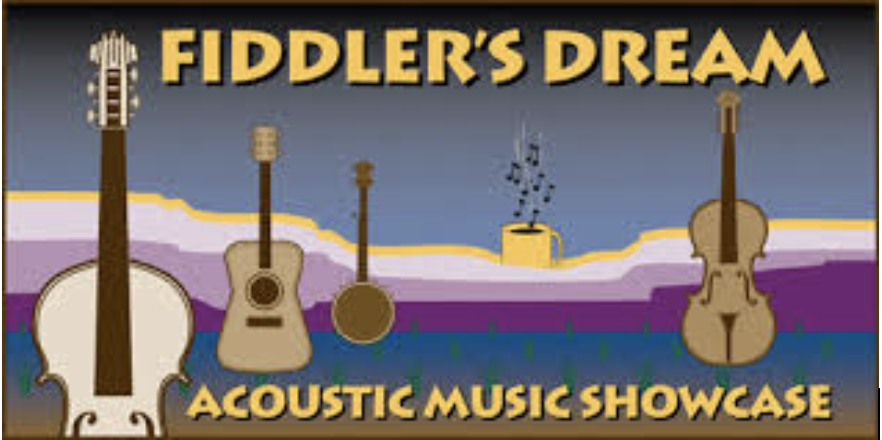Coffeehouses Brew up Acoustic Music Aplenty
Originally published in 2009
Although the days of bongo-playing beatniks are gone, there still are a hefty number of coffeehouses nationwide that feature grassroots acoustic music.
Some examples are Catacombs Coffee House in Rochester, N.Y.; Ten Pound Fiddle Coffee House in East Lansing, Mich.; the Stone Soup Coffeehouse in Pawtucket, R.I.; The Prism in Charlottesville, Va.; the Acoustic Coffee Lounge in Colorado Springs, Colo.; and Cousin Andy’s Coffee House in Carbondale, Ill.
The Acoustic Storm found one such establishment thriving in north central Phoenix, Ariz. The name of the place is Fiddler’s Dream, and it opens its doors three nights a week to lovers of all kinds of unplugged music including rock, folk, blues, bluegrass and ethnic varieties. Most people acquainted with the coffeehouse affectionately know it as “Fidd’s.”
One thing that sets Fiddler’s Dream apart from many similar coffeehouses is the fact that it is not affiliated with or even near a college campus. It rents space from a local Quaker congregation at their meeting halls.
The large room, used mainly for special events, seats up to 120. Most programs are held in a separate 49-seat building on the same property.
Thursdays are pegged as “Open stage” nights, where anyone who signs up can play for a few minutes. Performers of local, national and international stature appear on Fridays and Saturdays, when admission typically is $3 per person.
“Fidd’s was founded in 1987 for the purpose of providing a venue for acoustic music,” said Nia Maxwell, president of the board of directors. “There is no microphone and no amps or anything else electric in the instrumentation.”
The lone exception is the digital piano that the club recently placed on stage to replace their wooden acoustic model. With the room closed four days a week, extreme heat in the summer made it impossible to keep the piano in tune. “The board voted unanimously to allow the digital piano,” Maxwell said. “We didn’t feel it violated any of our beliefs.”
For $1 a patron can grab a cup of coffee or tea, a can of soda or bottle of juice. Cookies and hot chocolate sometimes are available. Along with the music, it’s a cheap way to have a remarkably good time.
“We have a database of performers,” Maxwell said. “They’re from everywhere, including Australia and England. Others have come from Minnesota, Massachusetts, Ohio, California and Oregon. We offer a stipend to the artists to help defray their transportation costs. At times, an artist can walk out of here with up to $75 from the tip jar.
“I also go to the Internet to find artists, and sometimes we book on solicitation. A lot of folks who do solo gigs have their own following (and hence are willing to play for a small sum.) A lot of them have volunteered here because they know what it takes to put on an evening. It gives them exposure in this environment. They do it to keep the music alive, and they know we’re not doing anything to get rich off it.
“Some musicians we get are used to playing in Borders (bookstore), and they’re almost afraid to play here because they know people are actually listening to them, not just looking at books or buying coffee.”
Being open only three nights a week can cost Fiddler’s Dream appearances by worthy musicians. “We miss some performers because they’re on a fixed schedule,” Maxwell revealed. “They may be coming through Phoenix and ask to play here on a Wednesday night. But we’re not open Wednesdays.”
Fiddler’s Dream draws its manpower from a pool of about 60 volunteers. Some help out regularly, while others haven’t been to the club in over a year, Maxwell said.
The origin of the coffeehouse’s name is a bit nebulous. “One of the folks who started it was a fiddler,” said Maxwell, who was not involved with Fidd’s at the start. “Lore has it that it was the result of kind of a brainstorm among the founders.”
The open stage format on Thursdays had a quirky beginning. “There was a point where one guy came into an inheritance and said he wanted to rent out the room every Thursday night and just play,” Maxwell related. Sometimes her husband Larry was the only one sitting in the audience. “That evolved into open stage on Thursdays.”
Fidd’s charges $2 or two cans of food for Thursday’s admission. The food is donated to food banks or relief causes.
Special events can benefit charitable causes. Recently, a special event featured seven musical acts plus poetry readings and discussions. Domestic violence shelters and an animal rescue organization benefitted. The suggested donation at the door was $20.
In such cases, Maxwell said, “The artists or their management companies will tell us what they want. That’s how the prices are set.”
Many patrons of Fiddler’s Dream and other coffeehouses may not be aware that rent is not the only expense that keeps the doors open. “I think one reason that we’re one of the few coffeehouses left in Phoenix is because of the licensing requirements,” Maxwell said. “ASCAP and BMI require us to pay a total of $1,500 a year.
“Unless our musicians play only their original songs, this sum must be paid. It’s due in January, and we get a 20 percent discount if we pay it in advance. Fortunately, we can lump both of our rooms together when we compute the amount we have to pay in licensing fees because they are both at the same address.”
Fiddler’s Dream is committed to featuring acts that please young patrons, as well as the older generation. According to Maxwell, “We don’t want to be just about over-40 music.
“The thing to stress is that it’s all about the music and keeping Fiddler’s Dream here to enjoy 20 years from now.”
For more information, log on to www.fiddlersdream.org.


